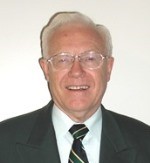ADVISORY ARTICLE
By Dr. Kenneth Smith, PMP
Honolulu, Hawaii
Projects encounter a wide variety of risks during implementation, many of which project managers are well aware aforehand; others completely unforeseen. During the planning phase, prudent project managers mitigate, or otherwise make some provision to deal with the ‘known-unknowns.’ Nevertheless, in addition to a readily-available contingency budget to deal with such eventualities, the need for an overall project-wide management reserve fund and schedule ‘buffer’ remains to offset the impact from indefinable ‘black swans.’
But how large should a management reserve fund be, and how much additional time should be pre-programmed to extend an otherwise-uneventful project completion date? That’s the million-dollar question. Instead of ‘off the top of the head’ ceiling estimates, or adding some pre-established ‘rule of thumb’ fixed percentage to the baseline schedule and budget, here is a more systematic approach to answer that question.
A matrix procedure is already well established and outlined in the Project Management Institute’s PMBOK® as a ‘best practice’ for determining the ‘risk exposure’ of individual known risks — based on the likelihood of their occurring, and the related impact should they occur.
A decision tree technique — in terms of their impact on the overall project schedule and budget — can similarly be applied to multiple across-the-board risks; with extra added for your ‘intuition’ and synergetic effect,[1] aka a “Murphy Cascade.” The two figures below illustrate the decision tree concept and cascade effect:
More…
To read entire article, click here
How to cite this article: Smith, K. (2020). Risk Exposure, Murphy’s Law & Management Reserve, PM World Journal, Vol. IX, Issue IX, September. Available online at https://pmworldlibrary.net/wp-content/uploads/2020/08/pmwj97-Sep2020-Smith-risk-exposure-murphys-law-and-management-reserve.pdf
About the Author

Dr. Kenneth Smith
Honolulu, Hawaii
![]()
Dr. Kenneth F. Smith has been a project management consultant for ADB, the World Bank, and USAID for decades. He earned his DPA (Doctor of Public Administration) from the George Mason University (GMU) in Virginia and his MS from Massachusetts Institute of Technology (MIT Systems Analysis Fellow, Center for Advanced Engineering Study). A long-time member of the Project Management Institute (PMI) and IPMA-USA, Dr. Smith is a Certified Project Management Professional (PMP®) and a member of the PMI®-Honolulu Chapter.
Ken’s book — Project Management PRAXIS (available from Amazon) — includes many other innovative project management tools & techniques; and describes a “Toolkit” of related templates available directly from him at kenfsmith@aol.com.
To view other works by Ken Smith, visit his author showcase in the PM World Library at https://pmworldlibrary.net/authors/dr-kenneth-smith/
[1] “The whole is greater than the sum of the parts.” Aristotle









